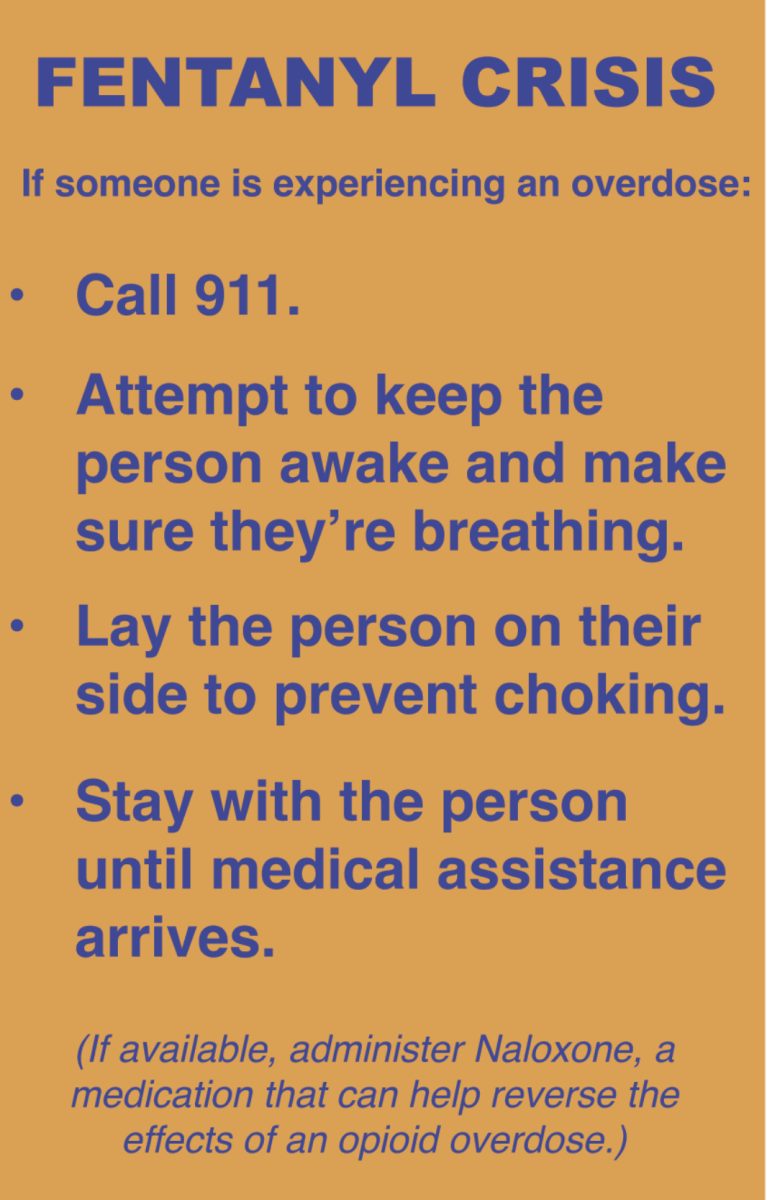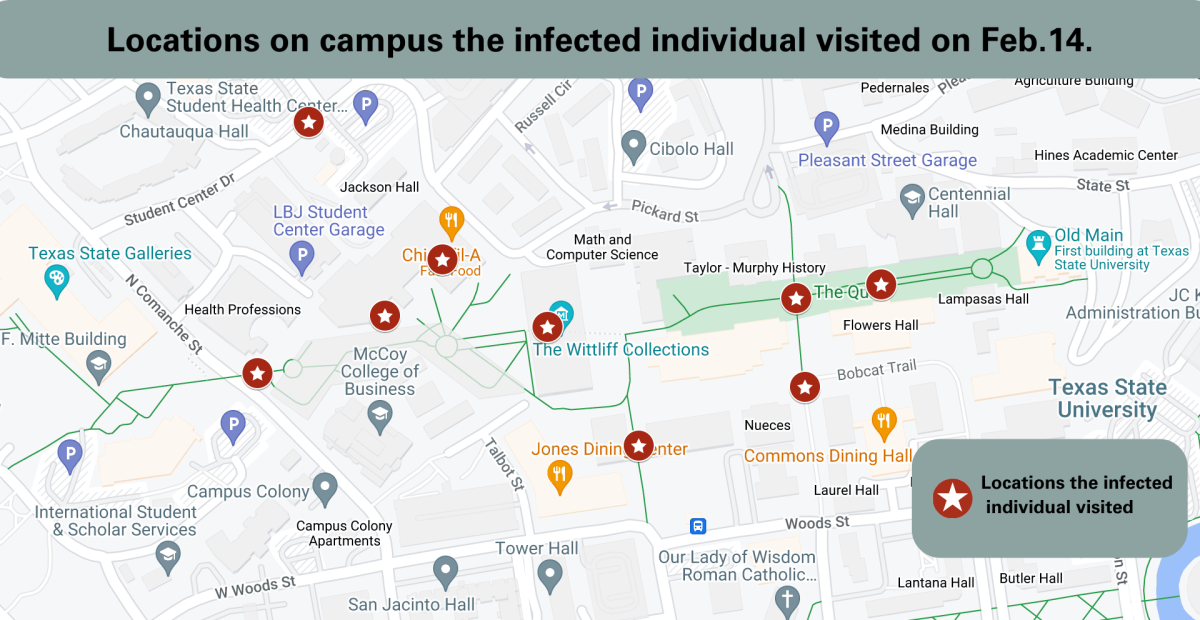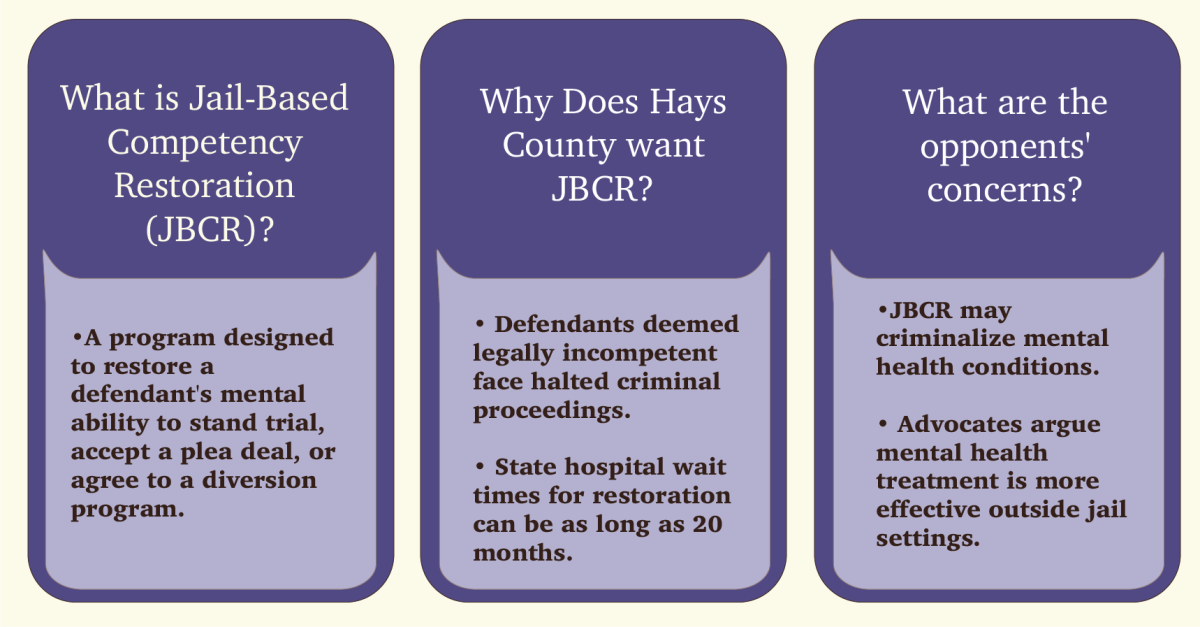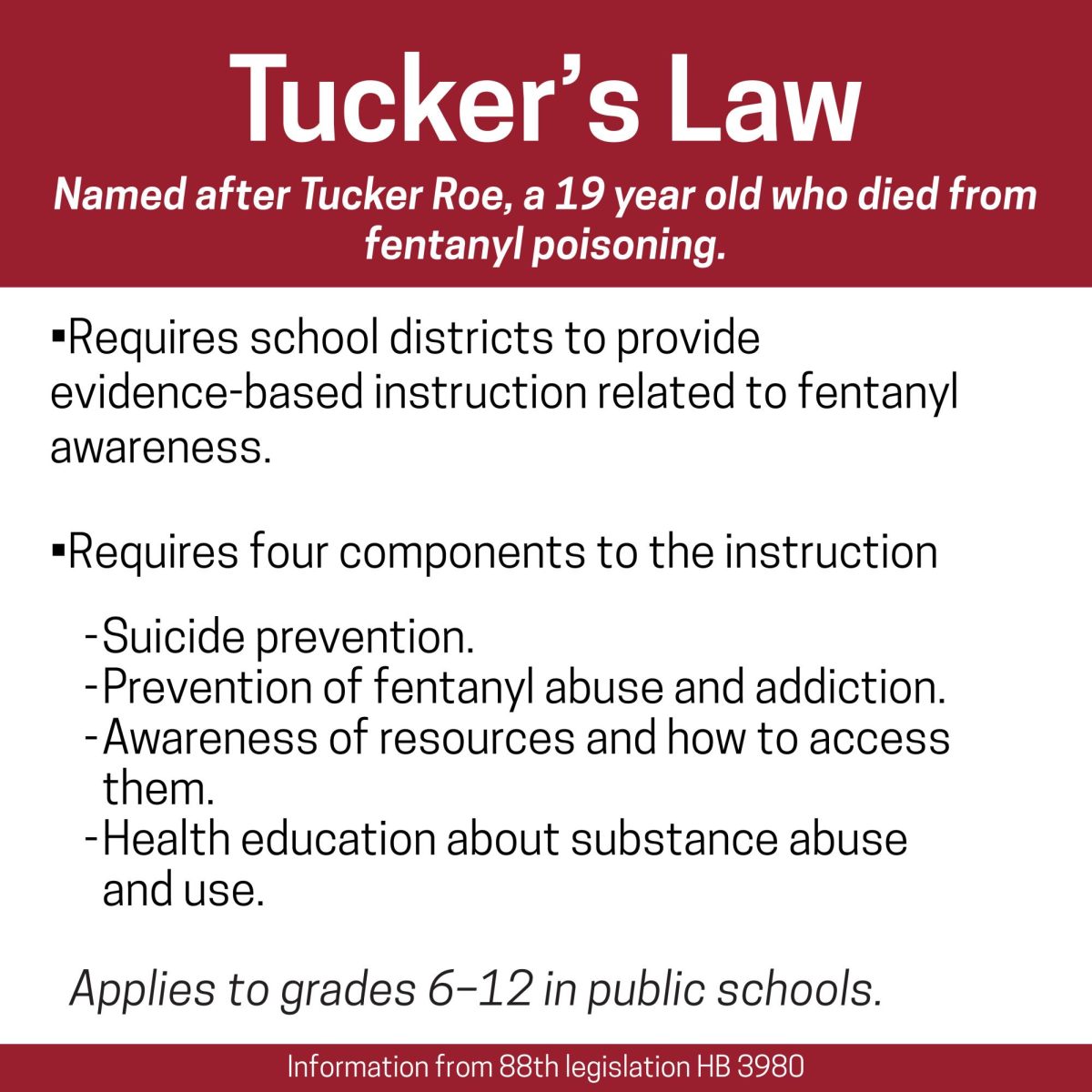Fentanyl overdose cases amongst teens and young people have increased in Hays County as six Hays CISD students died of fentanyl poisoning in the 2022-23 school year; and efforts to stop this crisis continue.
Ty Schepis, a psychology professor, said fentanyl, an opioid drug commonly given during surgeries and for the treatment of pain, is 50 to 100 times more potent than drugs such as morphine.
“It’s really about the chemical nature of the drug and how strongly it attaches to receptors,” Schepis said. “It attaches strongly and quickly making it harder for other drugs to get in there.”
Schepis said the increasing infiltration of fentanyl in the illicit drug supply around communities has caused many people who are receiving the opioid to not be aware of what they are truly taking.
“They may think they’re buying prescription opioid medication, cocaine or methamphetamine, but these drugs could be laced with fentanyl or just simply replaced.” Schepis said.
According to an email sent to parents of Hays CISD students, six students have died from fentanyl related overdoses since the summer of 2022 with a possible seventh fentanyl overdose case occurring in the beginning of October.
Although the case is still under investigation, Hays CISD has continued efforts to help combat this growing crisis particularly among teens.
These efforts include handing out educational materials at Hays CISD home football games, stocking Narcan, a nose spray that treats narcotic overdoses, at all campuses and hosting assemblies to raise awareness on fentanyl dangers.
San Marcos Police Department Narcotics Division Sergeant Tommy Villanueva said the problem is present everywhere and urges the importance of education awareness in schools and homes.
“The problem is in our schools, local bars and restaurants, and in the parking lots,” Villanueva said. “No one is immune to it and it knows no demographic boundary. It is very addictive.”
Villanueva said the first step in combating this crisis comes from the parents and having the conversation on the dangers of fentanyl and the signs to pay attention to with their children.
“What we as law enforcement try to implement is that the first step is the parents or their guardians, and if you see something, say something,” Villanueva said.
According to Director of University Health Services Emilio Carranco, the Student Health Center provides free Narcan for those struggling with opioid addiction and is preparing to implement a distribution system around campus.
According to Carranco, Narcan will be made available for free at three different distribution points on campus: The Student Health Center, Alkek Library and Student Recreation Center.
“We intend to expand our education efforts across campus so that students are more familiar with the danger of fentanyl and to understand where they can get help,” Carranco said.
Apart from the free distribution of Narcan, Texas State has a variety of drug treatment resources available for students who are suffering with drug addiction, Carranco said.
The Student Recovery Alliance group holds meetings at 5 p.m. every Wednesday, providing a safe space for students battling with drug or alcohol addiction to explore their personal struggles and work together to face their battles.
“This is a growing and significant problem in the adolescent population, but we’re concerned about that starting to spread into the college population,” Carranco said. “We want our students to be aware of the dangers and to avoid taking any kind of drug that is not prescribed to them.”
Editor’s Note: The University Star published this story in print with a different headline. The headline is changed online to more accurately reflect the content of the story.





















